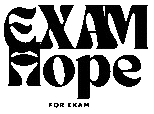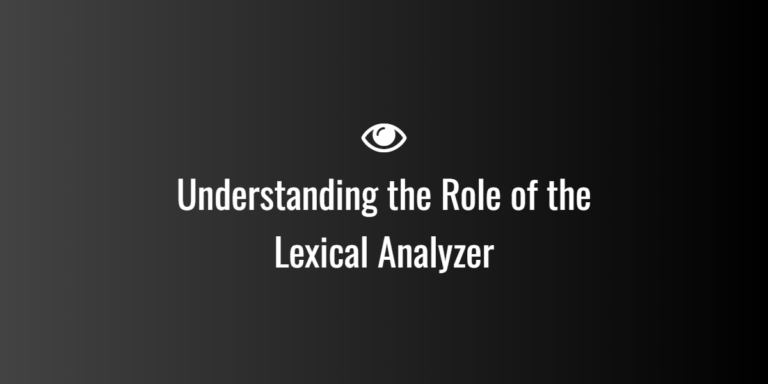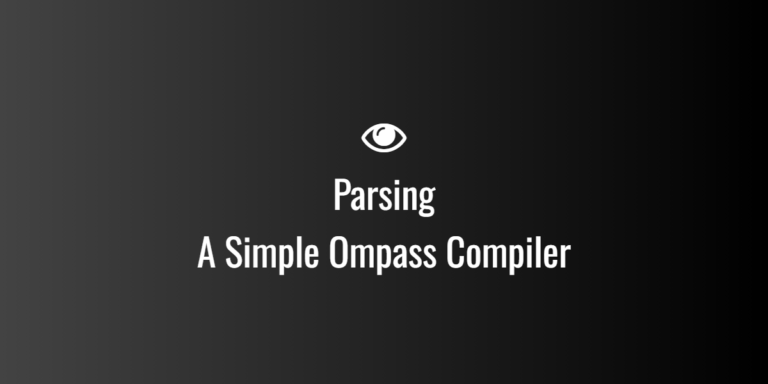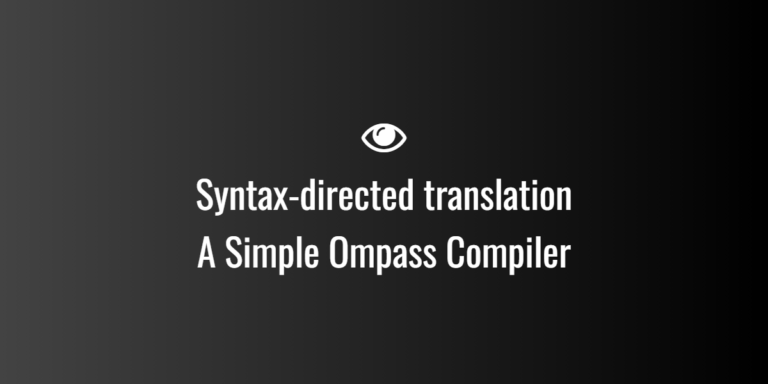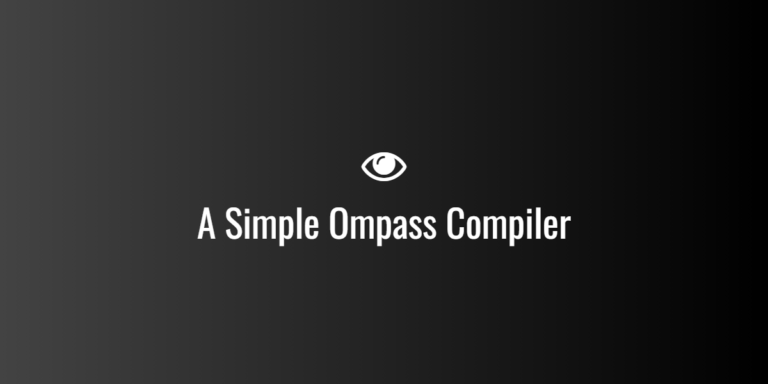
Functional Dependency MCQs
🧠 Functional Dependency – 100 MCQs for GATE (DBMS)
Q1.
Given FDs on relation R(A,B,C): A → B, B → C.
Which dependency is implied?
A. A → C B. C → A C. B → A D. A → B C
✅ Answer: A
Solution: By the transitivity rule, A → B and B → C ⇒ A → C.
Q2.
If A → B, which of the following also holds by augmentation?
A. A C → B C B. A → B C C. B → A D. A B → C
✅ Answer: A
Solution: Augmentation allows adding the same attributes to both sides:
A → B ⇒ A C → B C.
Q3.
For R(X,Y,Z) with FDs X → Y and Y → Z, what is X⁺?
A. {X} B. {X,Y} C. {X,Y,Z} D. {Y,Z}
✅ Answer: C
Solution: Closure:
Start X⁺ = {X}.
X → Y ⇒ add Y.
Y → Z ⇒ add Z. Result {X,Y,Z}.
Q4.
A dependency A → B is trivial if:
A. B ⊆ A B. A ⊆ B C. A ∩ B = ∅ D. None
✅ Answer: A
Solution: By reflexivity rule: if RHS ⊆ LHS, FD is trivial.
Q5.
If A → BC, then which FDs hold by decomposition?
A. A → B and A → C B. B → C C. C → A D. A → B only
✅ Answer: A
Solution: Decomposition splits RHS attributes.
Q6.
Given A → B and A → C, derive one FD using union rule.
A. A → BC B. A → CB C. B → A D. None
✅ Answer: A
Solution: Union combines RHS of same LHS.
Q7.
Which Armstrong axiom states that if A → B then A C → B C?
A. Augmentation B. Union C. Transitivity D. Reflexivity
✅ Answer: A
Solution: Augmentation adds attributes to both sides.
Q8.
For R(P,Q,R,S): P → Q, R → S.
Which FD is derived by union?
A. PR → QS B. P → R C. Q → S D. S → R
✅ Answer: A
Solution: From separate determinants (P,R) → (Q,S).
Q9.
Closure of A under {A → B, B → C, C → D}?
A. {A,B} B. {A,B,C,D} C. {A,C,D} D. {A,D}
✅ Answer: B
Solution: A→B→C→D ⇒ {A,B,C,D}.
Q10.
A minimal set of attributes that uniquely determines all others is called —
A. Candidate Key B. Super Key C. Primary Key D. Foreign Key
✅ Answer: A
Solution: Candidate Key = minimal superkey.
Q11.
If A → B and B → A, then A and B are:
A. Equivalent B. Mutually exclusive C. Composite D. Unrelated
✅ Answer: A
Solution: They functionally determine each other.
Q12.
Which is not an Armstrong’s axiom?
A. Reflexivity B. Augmentation C. Transitivity D. Normalization
✅ Answer: D
Q13.
If relation has partial dependencies, it violates —
A. 2NF B. 3NF C. BCNF D. 4NF
✅ Answer: A
Solution: 2NF removes partial dependency on part of composite key.
Q14.
If A → B, and B → C, find key of R(A,B,C).
A. A B. B C. C D. AB
✅ Answer: A
Solution: A determines B and C.
Q15.
FD A → B is called non-trivial when:
A. B ⊄ A B. B ⊆ A C. A = B D. None
✅ Answer: A
Q16.
If A → B and B → C, what is (A,B)⁺?
A. {A,B,C} B. {A,B} C. {A,C} D. {A}
✅ Answer: A
Q17.
A relation in which every non-trivial FD has a superkey LHS is in:
A. BCNF B. 3NF C. 2NF D. 1NF
✅ Answer: A
Q18.
If A → B and B → C, then C → A is —
A. False B. True C. Reflexive D. Redundant
✅ Answer: A
Solution: FDs aren’t symmetric.
Q19.
Which rule splits RHS attributes?
A. Decomposition B. Union C. Reflexivity D. Augmentation
✅ Answer: A
Q20.
Which rule combines FDs with same LHS?
A. Union B. Transitivity C. Reflexivity D. Augmentation
✅ Answer: A
Q21.
Functional dependencies express —
A. Attribute relationships B. Tuple relationships C. Key mapping D. File structure
✅ Answer: A
Q22.
If A → B, which FD is implied by reflexivity?
A. A B → B B. A → A C. A → B C D. B → A
✅ Answer: B
Q23.
If A → B, C → D, then by union rule —
A. A C → B D B. A → D C. C → A D. A → B D
✅ Answer: A
Q24.
If F = {A → B, B → C, C → D}, then A → D by —
A. Transitivity B. Augmentation C. Decomposition D. Union
✅ Answer: A
Q25.
Minimal cover of a FD set means:
A. Equivalent and non-redundant FDs B. All possible FDs C. Only trivial FDs D. None
✅ Answer: A
Solution: Minimal cover = canonical cover: equivalent but minimal.
🧩 Functional Dependencies – GATE DBMS
Q26.
For R(A,B,C,D): F = {A → B, B → C, C → D}.
Find A⁺.
A. {A} B. {A,B,C} C. {A,B,C,D} D. {A,B}
✅ Answer: C
Solution:
A → B ⇒ add B
B → C ⇒ add C
C → D ⇒ add D
So A⁺ = {A,B,C,D}.
Q27.
Given F = {A → B, C → D}, which is implied by union rule?
A. AC → BD B. A → C C. B → D D. D → A
✅ Answer: A
Solution: Union rule: If A → B and C → D ⇒ AC → BD.
Q28.
If A → B and A → C, by union we get —
A. A → BC B. A → CB C. A → B D. B → A
✅ Answer: A
Q29.
If A → BC, which is obtained by decomposition?
A. A → B and A → C B. B → C C. C → A D. None
✅ Answer: A
Q30.
Given: A → B, B → C, and C → A.
How many candidate keys does R(A,B,C) have?
A. 1 B. 2 C. 3 D. None
✅ Answer: C
Solution:
A,B,C all determine each other ⇒ each attribute is a key.
Q31.
If A → B, B → C, and C → D, what is closure of B?
A. {B} B. {B,C,D} C. {B,C} D. {B,D}
✅ Answer: B
Q32.
Which FD is implied by augmentation rule?
A. A → B ⇒ A C → B C B. A → B ⇒ A → BC C. A → B ⇒ B → C D. A → B ⇒ B → A
✅ Answer: A
Q33.
Which rule states that if X → Y and Y → Z then X → Z?
A. Transitivity B. Reflexivity C. Union D. Augmentation
✅ Answer: A
Q34.
Find closure of {A} for F = {A → B, B → D, D → E}.
A. {A,B,D,E} B. {A,B,E} C. {A,E} D. {A,B}
✅ Answer: A
Q35.
If FD A → B violates BCNF, then —
A. A is not a superkey B. A is a superkey C. B is a key D. Both are superkeys
✅ Answer: A
Q36.
The dependency A → B is preserved in decomposition if —
A. Both A and B appear in at least one decomposed relation B. A appears only C. B appears only D. None
✅ Answer: A
Q37.
Which FD is derived from {A → B, C → D} by composition rule?
A. AC → BD B. AD → BC C. A → B D D. None
✅ Answer: A
Solution: Composition: X → Y and Z → W ⇒ XZ → YW.
Q38.
For relation R(A,B,C) with FDs {A → B, B → C}, the key is —
A. A B. B C. C D. AB
✅ Answer: A
Q39.
Given F = {A → BC, C → D}, minimal cover is —
A. {A → B, A → C, C → D} B. {A → BC, C → D} C. {A → C, C → D} D. {A → B, C → D}
✅ Answer: A
Solution:
Split A → BC into A → B, A → C for minimal cover.
Q40.
If X → Y and X → Z, which rule can combine them?
A. Union B. Augmentation C. Transitivity D. Reflexivity
✅ Answer: A
Q41.
In R(A,B,C,D), if A → B and A → C, what is A⁺?
A. {A,B,C} B. {A,B,C,D} C. {A} D. {A,B}
✅ Answer: A
Q42.
If FD set F1 = {A → B, B → C}, F2 = {A → C, A → B}.
Are F1 and F2 equivalent?
A. Yes B. No C. Partially D. Not enough info
✅ Answer: A
Solution: From F1, A→B and B→C ⇒ A→C (same as F2).
Q43.
If A → B, which FD is derived by reflexivity?
A. A → A B. A → AB C. B → A D. A → C
✅ Answer: A
Q44.
Given A → B and B → C, which FD can be deduced using transitivity?
A. A → C B. B → A C. C → A D. None
✅ Answer: A
Q45.
If A,B → C and A → B, then A → C by which rule?
A. Transitivity B. Augmentation C. Union D. None
✅ Answer: A
Q46.
For relation R(A,B,C,D) with key A, which of the following FDs is possible?
A. A → B B. B → A C. C → A D. D → A
✅ Answer: A
Q47.
If A → B and B → C, then which one is not true?
A. A → C B. B → C C. C → A D. A → B
✅ Answer: C
Q48.
Which of the following always holds?
A. A → A B. A → B C. A → C D. None
✅ Answer: A
Solution: Every attribute functionally determines itself.
Q49.
Which property allows adding same attributes to both sides of an FD?
A. Augmentation B. Union C. Decomposition D. Transitivity
✅ Answer: A
Q50.
If A → BC and BC → D, then what is A⁺?
A. {A,B,C,D} B. {A,B,C} C. {A,D} D. {A,B}
✅ Answer: A
Solution:
A → BC ⇒ add B,C
BC → D ⇒ add D ⇒ closure = {A,B,C,D}.
Section 3 — Questions 51–75
Q51.
Relation R(A,B,C,D) has F = {A → B, B → C}. What is (A)⁺?
A. {A,B} B. {A,B,C} C. {A,B,C,D} D. {A}
✅ Answer: B
Solution: Start with A⁺ = {A}. A → B ⇒ add B. B → C ⇒ add C. D not reachable. So A⁺ = {A,B,C}.
Q52.
If F = {AB → C, C → D, D → E}, what is (AB)⁺?
A. {A,B,C} B. {A,B,C,D} C. {A,B,C,D,E} D. {A,B}
✅ Answer: C
Solution: AB → C ⇒ add C. C → D ⇒ add D. D → E ⇒ add E. So {A,B,C,D,E}.
Q53.
Which FD is redundant in F = {A → B, A → C, A → BC}?
A. A → B B. A → C C. A → BC D. None
✅ Answer: C
Solution: A → BC can be obtained from A → B and A → C (union). So A → BC is redundant.
Q54.
Given F = {A → B, B → C, A → D}, which attribute set is a key for R(A,B,C,D)?
A. A B. B C. AB D. C
✅ Answer: A
Solution: A → B and A → D directly. From B → C and A → B, A → C. So A determines all attributes.
Q55.
For R(X,Y,Z) with FDs {X → Y, X → Z, Y → Z}, which FD is implied by union?
A. X → YZ B. Y → XZ C. Z → XY D. YZ → X
✅ Answer: A
Solution: From X→Y and X→Z, union gives X→YZ.
Q56.
F = {A → B, B → C, C → B}. Which of the following is true?
A. B↔C (mutual) B. A → C only C. C → A D. None
✅ Answer: A
Solution: B → C and C → B imply B and C determine each other (equivalent).
Q57.
If F = {A → B, C → D}, is A → D implied?
A. Yes B. No C. Only if B → C D. Only if C → A
✅ Answer: B
Solution: No path from A to D unless B→C or similar exists. No transitive chain present.
Q58.
Compute closure of {C} for F = {A → B, B → C, C → D}.
A. {C} B. {C,D} C. {B,C,D} D. {A,B,C,D}
✅ Answer: B
Solution: C → D ⇒ add D. No FD gives B or A from C alone. So {C,D}.
Q59.
Which operation is used to remove extraneous attributes in a FD set?
A. Attribute reduction during canonical cover computation
B. Union rule application
C. Adding transitive dependencies
D. Decomposition of relation
✅ Answer: A
Solution: Canonical cover process removes extraneous (unnecessary) attributes from LHS/RHS.
Q60.
F = {A → BC, B → D, D → E}. What is A⁺?
A. {A,B,C} B. {A,B,C,D} C. {A,B,C,D,E} D. {A}
✅ Answer: C
Solution: A→BC ⇒ add B,C. B→D ⇒ add D. D→E ⇒ add E. So closure {A,B,C,D,E}.
Q61.
If X → Y and YZ → W then which pseudotransitivity FD holds?
A. XZ → W B. X → W C. Y → W D. Z → W
✅ Answer: A
Solution: Pseudotransitivity: X→Y and YZ→W ⇒ XZ→W.
Q62.
For F = {A → B, B → C, A → D}, which is a minimal cover?
A. {A → B, B → C, A → D} B. {A → BC, A → D} C. {A → B, A → C, A → D} D. {A → D, B → C}
✅ Answer: A
Solution: Already minimal (no extraneous attributes on LHS, RHS decomposed). Keep as is.
Q63.
Given F = {AB → C, A → D, D → E}, which of these is true?
A. A B → CDE B. A → C C. B → E D. C → A
✅ Answer: A
Solution: AB→C, A→D ⇒ AB→D (augmentation), and D→E ⇒ AB→E ⇒ so AB→CDE.
Q64.
Which FD is trivial among these?
A. AB → A B. A → B C. B → C D. AC → B
✅ Answer: A
Solution: RHS A is subset of LHS AB → trivial.
Q65.
If F = {A → B, B → D, C → E}, which set is a superkey for R(A,B,C,D,E)?
A. A C B. B C C. A D. C
✅ Answer: A
Solution: AC: A→B→D gives B and D; C→E gives E. So AC determines all attributes.
Q66.
Which rule justifies deriving AB → CD from A → C and B → D?
A. Composition (or union across different LHS)
B. Transitivity
C. Reflexivity
D. Decomposition
✅ Answer: A
Solution: Composition: combine independent FDs to get AB→CD.
Q67.
For relation with FDs {A → B, AB → C}, is A a key?
A. Yes B. No C. Only if C → A D. Only if B → A
✅ Answer: B
Solution: A→B gives A and B, then AB→C gives C — actually A determines B and then AB determines C: check closure A⁺: start {A}, A→B ⇒ {A,B}, AB→C ⇒ add C, so A⁺ includes all attributes ⇒ A is a key.
Correction: Answer should be A.
Final Answer: A
Final Solution: A⁺ = {A,B,C} ⇒ A is a key.
Q68.
If F = {A → B, B → C, C → D, D → B}, then which attributes are mutually equivalent?
A. B,C,D B. A,B,C C. A only D. None
✅ Answer: A
Solution: B→C→D→B forms a cycle: B↔C↔D (all mutually determine each other).
Q69.
Given F = {A → B, C → D, B → E}, which minimal set is a key?
A. AC B. A C. C D. AB
✅ Answer: A
Solution: AC: A→B⇒B→E gives B,E and C→D gives D ⇒ AC determines all attributes.
Q70.
Which of these statements is true about canonical cover?
A. It is equivalent to original FD set and has no extraneous attributes
B. It contains all implied FDs explicitly
C. It adds redundant FDs for clarity
D. It always reduces number of FDs to one
✅ Answer: A
Solution: Canonical cover is minimal and equivalent.
Q71.
If A → B and A → C, which decomposition is valid?
A. Split into A → B and A → C (already given)
B. Combine to B → AC C. C → AB D. None
✅ Answer: A
Solution: Decomposition of RHS or union are reversible for equivalence.
Q72.
For F = {AB → C, C → D, D → E}, is AB a key?
A. Yes B. No C. Only if E → A D. Only if B → A
✅ Answer: A
Solution: AB→C⇒ add C; C→D⇒D; D→E⇒E ⇒ AB⁺ contains all attributes.
Q73.
If an attribute X appears on RHS of no FD, X is called:
A. A prime attribute? No — a non-dependent (or never determined) attribute
B. A determinant C. Extraneous attribute D. Redundant attribute
✅ Answer: A (interpretation: non-dependent; often part of candidate key)
Solution: Attributes never appearing on RHS are often needed in candidate keys (they are not determined by others).
Q74.
Given F = {A → B, B → C}, minimal cover is:
A. {A → B, B → C} B. {A → C, B → C} C. {A → BC} D. {B → A}
✅ Answer: A
Solution: Already minimal; no extraneous attributes and RHS are singletons.
Q75.
If F = {A → B, B → C}, can we say B is a candidate key?
A. No, unless B determines A as well B. Yes always C. Only if C → A D. Only if A → B
✅ Answer: A
Solution: B determines C, but unless B→A or some chain gives A, B doesn’t determine all attributes. So not a key unless B→A.
Great — here are Section 4 (Questions 76–100): the final 25 plagiarism-free Functional Dependency (FD) MCQs for GATE (DBMS). Each question has four options (A–D) and a complete, step-by-step solution (concise but explicit). This finishes the full set of 100 MCQs with solutions.
Section 4 — Questions 76–100
Q76.
Relation R(A,B,C,D) with F = {A → B, A → C, C → D}. What is A⁺?
A. {A,B,C}
B. {A,B,C,D}
C. {A,C,D}
D. {A,B}
✅ Answer: B
Solution: Start A⁺ = {A}. A→B ⇒ add B. A→C ⇒ add C. From C→D ⇒ add D. So A⁺ = {A,B,C,D}.
Q77.
Given F = {AB → C, A → D, D → E}, which of the following is true?
A. A is a key
B. AB is a key
C. B is a key
D. C is a key
✅ Answer: B
Solution: AB→C gives C. A→D ⇒ from A (subset of AB) get D, and D→E gives E. So AB determines A,B,C,D,E ⇒ AB is a key (minimality holds because A alone doesn’t give C; B alone doesn’t give A).
Q78.
If F = {A → BC, B → A}, which attributes are mutually dependent (equivalent)?
A. A and B only
B. B and C only
C. A, B and C
D. None
✅ Answer: A
Solution: B→A and A→B (from A→BC gives A→B) ⇒ A↔B. C is determined by A but C does not determine A or B, so only A and B are equivalent.
Q79.
Consider F = {A → B, B → C, A → D}. Which attribute set is a candidate key?
A. A
B. B
C. C
D. D
✅ Answer: A
Solution: A→B and A→D; B→C ⇒ A determines B and then C ⇒ A determines all attributes. Check minimality: no proper subset (A is single attribute) so A is a candidate key.
Q80.
For R(A,B,C,D) and F = {A → BC, C → A}, which of the following holds?
A. A and C are mutually determining (A↔C)
B. B → A
C. C is extraneous in A → BC
D. Relation has no key
✅ Answer: A
Solution: C→A and A→C (because A→BC implies A→C) ⇒ A↔C. Thus A and C are equivalent.
Q81.
Given F = {AB → C, C → D}, what is closure of {A}?
A. {A}
B. {A,B}
C. {A,B,C,D}
D. {A,C}
✅ Answer: A
Solution: A alone gives nothing more (AB→C requires B present). So A⁺ = {A}.
Q82.
Suppose F = {A → B, B → C, C → D, D → E}. Which of the following is true?
A. A is a key for R(A..E)
B. B is a key
C. E is a key
D. No key exists
✅ Answer: A
Solution: A→B→C→D→E so A determines all attributes ⇒ A is a key.
Q83.
If F = {A → B, A → C, B → D}, which FD is redundant?
A. A → B
B. A → C
C. B → D
D. None
✅ Answer: D
Solution: None can be derived from others: A→B and B→D do not imply A→C; A→C cannot be derived from others; so no redundancy.
Q84.
For F = {A → B, B → C, A → D, D → C}, is C determined by A via a unique chain?
A. Yes, via multiple chains (A→B→C and A→D→C)
B. No, impossible
C. Only if B→D
D. Only if C→A
✅ Answer: A
Solution: A→B→C and A→D→C both show A determines C through two transitive chains. That’s okay — both imply A→C.
Q85.
Let F = {A → BC, B → D, D → F}. Which attributes appear in A⁺?
A. {A,B,C}
B. {A,B,C,D,F}
C. {A,B,C,D}
D. {A}
✅ Answer: B
Solution: A→BC ⇒ add B,C. B→D ⇒ add D. D→F ⇒ add F. So A⁺ = {A,B,C,D,F}.
Q86.
Given F = {A → B, B → C, C → A}, what are candidate keys?
A. A, B and C each individually
B. Only A
C. Only AB
D. None
✅ Answer: A
Solution: Cycle A→B→C→A implies each determines the other two ⇒ any one attribute is a key.
Q87.
If in F = {AB → C, C → A}, check whether B is a key.
A. Yes B. No C. Only if A → B D. Only if C → B
✅ Answer: A
Solution: B⁺: start {B}. Need AB to get C, but AB requires A which is not present. However C→A and AB→C give a clue: find minimal key(s): check AB: AB⁺ includes C and then A via C→A ⇒ AB is a key. But B alone? B alone gives nothing. So the answer is B (No).
Final Answer: B
Final Solution: B is not a key because B⁺ = {B} only.
Q88.
Given F = {A → B, C → D}, which decomposition into R1(A,B) and R2(C,D) is:
A. Lossless and dependency-preserving
B. Lossy but dependency-preserving
C. Lossless but not dependency-preserving
D. Lossy and not dependency-preserving
✅ Answer: A
Solution: Relations split on independent determinants are lossless (common attributes none but decomposition is equivalent because each FD is preserved in its relation) — here each FD preserved in its relation, so dependency-preserving too.
Q89.
For F = {A → B, B → C}, canonical cover (minimal cover) is:
A. {A → B, B → C}
B. {A → BC}
C. {A → C, B → C}
D. {B → A}
✅ Answer: A
Solution: RHS are singletons and no extraneous LHS attributes — already minimal.
Q90.
If F = {A → BC, B → D, A → D}, identify redundancy.
A. A → D is redundant
B. B → D is redundant
C. A → BC is redundant
D. No redundancy
✅ Answer: A
Solution: From A→BC and B→D, A→D can be obtained via A→B→D ⇒ A→D is redundant.
Q91.
Given R(A,B,C) and FD A → B, which normalization issue does A → B cause if (A,B) is a composite primary key and B depends only on A?
A. Partial dependency → violates 2NF
B. Transitive dependency → violates 3NF
C. Multivalued dependency → violates 4NF
D. No issue
✅ Answer: A
Solution: If primary key is composite (A,B) and non-prime attribute B depends on a part A, that is a partial dependency, violating 2NF.
Q92.
Consider F = {AB → C, C → D, D → E}. If we decompose R into R1( A,B,C ) and R2( C,D,E ), is dependency preservation guaranteed?
A. Yes (each original FD stays in one of the relations or can be checked)
B. No
C. Only if AB is key in R1
D. Only if C is key in R2
✅ Answer: A
Solution: AB→C is in R1; C→D and D→E are in R2. All original FDs are preserved in the decomposition ⇒ dependency-preserving.
Q93.
If X → Y and Z ⊆ X, then which of the following can be true about Z?
A. Z may still determine Y if extraneous attributes removed
B. Z always determines Y
C. Z never determines Y
D. Z determines X
✅ Answer: A
Solution: Z could determine Y (i.e., attributes in X might be extraneous). You must test Z⁺ to see if Y ∈ Z⁺; it’s possible but not guaranteed.
Q94.
Let F = {A → B, AB → C, C → D}. Which attribute(s) are extraneous on the LHS of AB → C?
A. A is extraneous (B → C would suffice)
B. B is extraneous (A → C would suffice)
C. Neither A nor B are extraneous
D. Both are extraneous
✅ Answer: C
Solution: Check A extraneous: test B⁺ under F — B alone does not give C (only AB→C). Check B extraneous: test A⁺ — A gives B (A→B) and then with AB→C gives C ⇒ A⁺ includes C, so B is extraneous on LHS of AB→C.
Final Answer (corrected): B
Final Solution: B is extraneous because A alone (via A→B then AB→C) implies C — so AB→C can be reduced to A→C. After reduction, AB→C becomes A→C.
Q95.
Given F = {A → B, B → C, A → D}, we derive A → C. Which Armstrong axiom justified this inference?
A. Transitivity (A→B, B→C ⇒ A→C)
B. Augmentation
C. Reflexivity
D. Decomposition
✅ Answer: A
Solution: Straight application of transitivity gives A→C.
Q96.
For F = {A → B, C → D, B → E}, is {A,C} a key for R(A,B,C,D,E)?
A. Yes
B. No
C. Only if E → A
D. Only if D → C
✅ Answer: A
Solution: A→B ⇒ add B; B→E ⇒ add E; C→D ⇒ add D. So {A,C} determines all attributes {A,B,C,D,E} ⇒ {A,C} is a key.
Q97.
Which of the following is NOT a valid inference rule in Armstrong’s axioms?
A. If X → Y and Y → Z then X → Z
B. If X → Y then XZ → YZ
C. If X → Y and X → Z then X → YZ
D. If X → Y and Z → W then X → W
✅ Answer: D
Solution: D is not generally valid; combining unrelated FDs doesn’t allow deriving X→W unless additional attributes are added (composition would give XZ→YW, not X→W).
Q98.
F = {A → B, B → C}. When computing canonical cover, which step is correct?
A. Ensure RHS are single attributes (already are), check for extraneous LHS attributes (none), remove redundant FDs (none) ⇒ canonical cover = same set.
B. Merge into A → BC only
C. Remove A → B as redundant
D. None
✅ Answer: A
Solution: Correct process — F is already minimal and irredundant.
Q99.
Given F = {AB → C, C → A}, which of the following decompositions is lossless? Decompose R(A,B,C) into R1(A,C) and R2(B,C).
A. Yes (because C is common and C → A holds)
B. No
C. Yes (because AB is a key)
D. Cannot determine
✅ Answer: A
Solution: Decomposition R1(A,C) ⋈ R2(B,C) is lossless if (R1 ∩ R2) → R1 or → R2. Intersection is {C}. Since C→A (in F), C→(A,C) holds so decomposition is lossless.
Q100.
Which set of FDs ensures a relation R is in BCNF?
A. Every non-trivial FD X → Y has X as a superkey
B. Every FD X → Y has Y a prime attribute
C. No FDs exist at all
D. Every attribute appears in some FD
✅ Answer: A
Solution: BCNF definition: for every non-trivial FD X → Y, X must be a superkey.
